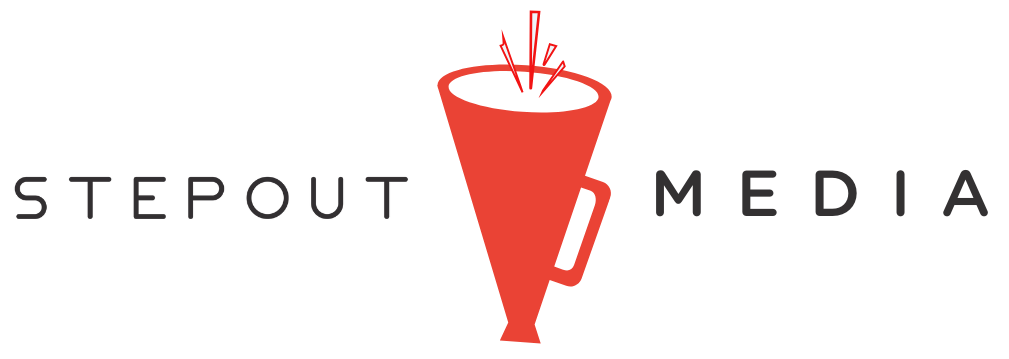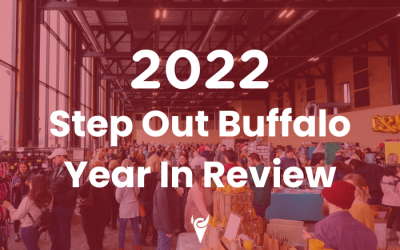Updated: Jul 1
Guest post by Emily Martin
The PPP Forgiveness application is out, and it’s provided a lot of clarity on how forgiveness will work, and other questions that have been outstanding- although other questions still remain. As you wrap up your PPP spending periods and the all-important June 30th date gets closer, we compiled the latest and greatest updates for you to ensure you are maximizing your forgiveness potential and avoiding any pitfalls as you manage spending and staffing in line with the rules of the program.
As always, we suggest contacting your CPA or Bank Representative to get the best guidance on how to proceed in your specific situation with this new information.
NOTE: Important updates to this article were made on June 10th, 2020 after the anticipated changes written about in this article’s original publication were passed in the PPPFA (“Flexibility Act”). These updates are summarized below.
It’s important to note these changes have a retroactive effect- meaning that the changes are treated as if they were included in the original CARES Act so even businesses who already received PPP funding and started spending PPP money can apply these changes.
- Businesses can now choose to extend their PPP period from 8 to 24 weeks. If you have been unable to open your business due to the state mandated closures and have been worried about the ability to spend the required amount of the loan on payroll expenses- this is very helpful!
- Speaking of required payroll spending, this act modified the required payroll spend amount from 75% to 60%! This means you can now use a much larger amount of the loan, 40% instead of 25%, to pay for other qualifying business expenses covered by PPP (rent, utilities, etc.). This is a huge advantage for businesses with smaller payrolls, or who perhaps weren’t able to, and don’t anticipate, being able to bring back all employees any time soon.
- The all-important date of 6/3/20 to meet the requirements for certain forgiveness reduction exemptions (returning to pre-COVID headcount and compensation levels), has been extended to December 31 st!
- The payback period for “non-forgivable” spending has been extended from 2 to 5 years, and the interest deferral period has been extended from 6 to 12 months. Extension of this period may require an application so businesses should check with their borrowing institutions to ensure they get the extension.
- Borrowers eligible for loan forgiveness can now also take advantage of the payroll tax deferral under the CARES Act (previously, Borrowers had to choose between the two benefits).
- A provision has been added that requires businesses to apply for forgiveness within 10 months of their “covered period” ending (see definition below) or they will be required to start making payments on their PPP loan immediately (principal and interest). Mark this date on your calendar and make sure you stay ahead of it based on what you determine your covered period to be.
- Finally, the Flexibility Act expands on the already existing list of ways to achieve exemption from loss to headcount as a forgiveness-reducing factor. The new exemption scenarios require:
- A documented inability to rehire individual employees who were on staff as of 2/15/20; AND an inability to replace this person’s headcount with a similarly qualified person by 12/31/20. NOTE: this means it is no longer sufficient, likely due to the extended deadline of 12/31 to replace headcounts, to receive forgiveness reduction exemption based simply on an employee’s documented refusal to come back to work.; OR
- A documented inability to return the business to the same level of activity as it was operating at on or before 2/15/20 due to compliance with requirements/guidance established by the Department of Health and Human Services, CDC, or OSHA for the period starting 3/1 through to 12/31/20, related to sanitation, social distancing, or other safety/health requirements related to COVID.
______________________________________________________________________________________________________________________________
1: The Forgiveness application is out
This itself helps provide guidance on how forgiveness will work, but we’ve also summarized the most significant updates on this below.
2) New Guidance says payroll costs for self-employed individuals AND owner-employees is cappedat the lesser of 8/52 of 2019 compensation OR the equivalent of $100k annually per individual across all businesses
Prior rulings seemed to exempt owner-employees from the 2019 income limit, but the newest guidance indicates this is not so.
3) Additional guidance on how the total forgiveness amount will be determined has been provided
Businesses are eligible for a forgiveness amount that is the lesser of:
- Your full PPP loan amount or;
- The sum of all forgiveness-eligible costs as reduced for employee compensation and FTE headcount reductions (more info below), or;
- Payroll costs during the covered period divided by 0.75 (such that the amount forgiven is not less than 75% payroll costs).This appears to mean that you could have determined you could not spend a full 75% of what was disbursed on payroll, and still be eligible for full forgiveness of what you did spend based on reworking the numbers for this consideration. Note: Per the above update to this article this amount has changed from 75 %to 60%.

4) You can choose to (slightly) modify the spending period for eligible payroll costs only in order to better align the period with your payroll schedule
New guidance indicates you can choose either the 8-week (56-day) period from the date of disbursement OR, if more convenient to align with your payroll schedule, an alternative 8-week period that begins on the first day of your first pay period following the loan disbursement. This can only be done for biweekly or more frequent payroll cycles. Note this “alternative period” cannot be set for non-payroll costs used for PPP. Note: this concept still applies, but businesses also have the choice to extend to a 24 week period per the changes documented above from the Flexibility Act.
5) More detailed definitions of “eligible forgiveness costs” and terms have been provided
- Eligible Payroll Costs: In general, payroll costs must be paid rather than incurred during the decided PPP period. Payroll costs are considered paid on the day that paychecks are distributed or the Borrower originates an ACH credit transaction. Payroll costs are considered incurred on the day that the employee earns the pay.
- Eligible Non-payroll Costs: These qualifying costs must be paid or incurred during the PPP period and paid on or before the next regular billing date, even if the billing date is after your PPP period. This suggests that costs allocable to the period prior to the PPP period, but paid during the PPP period are eligible non-payroll costs.

6) New clarification has been provided on how the forgiveness amount will be calculated. The amount of your PPP loan forgiven will be determined based on:
- First and foremost, the loan will be reduced dollar-for-dollar by the amount of any salary cut for anyone employed during your PPP period that is in excess of 25% of such employee’s total salary or wages for the January 1, 2020 to March 31, 2020 period and either (i) did not receive annualized compensation of $100,000 or more in any pay period in 2019; or (ii) was not employed by employer in 2019.
- The second major reduction factor will be for any reduction in the average number of FTE (full-time equivalent) employees during your PPP period compared to the average number of FTE employees per month during a reference period that you select. You can select one of the following reference periods: 2/15/19 – 6/30/19, 1/1/20 – 2/29/20, or, in the case of seasonal employers, average number of FTE employees per month between 2/15/19 – 6/30/19. Note: the date to restore FTE and compensation amounts has now been pushed to 12/31/20 per the Flexibility Act.
The following exceptions apply to the FTE reduction (meaning you can still count the lost headcount if the following scenarios apply):
- Any scenario where you made a written effort (offer, etc.) to rehire an employee during your PPP period which was rejected by the employee. Note: new guidance has indicated you must contact the state unemployment office in cases where offers for re-employment have been rejected in order to qualify for this exemption.
- Any employee who, during your PPP period was: fired for cause, voluntarily resigned, or voluntarily requested and received a reduction of hours.
- Note that for these exceptions, you cannot include this FTE for situations where you replaced the employee with a new employee (this new employee will already have taken that FTE’s place and this would be “double-dipping”).
- Pro-tip: these scenarios only exist if you can document that they actually happened!
Note: Since the Flexibility Act was passed, there is now also the requirement to prove you were unable to hire similarly-qualified individuals to replace headcount losses (see above).

7) There does still seem to be an ultimate-forgiveness caveat tied to the 6/30/2020 date.
- If you reduced your FTE count or salaries/pay in the period during COVID (between 2/15 and 4/26), but then you returned these levels to their “normal” state by 6/30/2020 (even if they were not “normal” during your PPP period) any reductions in these numbers during your PPP period appear as if they will be overlooked. Note, this looks to be an all-or-nothing caveat, so unless you 100% return to normal levels, any other scenarios will not qualify you for the exemption. Note: the changes to this form the Flexibility Act.
- Finally, the forgiveness application seems to indicate another all-inclusive way to avoid forgiveness reduction: if you have not reduced either the number of employees; or the average paid hours of your employees between 1/1/20 and the end of your PPP period, then it seems there will be no reduction in your forgiveness amount. Further clarity to come.
- Note: The Flexibility Act provided an additional caveat regarding inability to resume normal business activity. See the above revision section to this article for more details.
8) We finally know what FTE means!
Average FTE during your PPP period is determined using the average number of hours paid per week, divided by 40, and rounded to the nearest tenth. This calculation is done on an employee-by-employee basis and the maximum FTE for each employee is capped at 1.0.
If you do not want to do this exact calculation in situations where it would be burdensome, you can use a simplified method that assigns a 1.0 for employees who work 40 hours or more per week and 0.5 for those who work fewer, but should note that doing so may understate FTEs.
9) Finally, there is still proposed Congressional action getting a lot of attention this week that is likely to majorly change the PPP program including:
- Extending the PPP period for spending (there are two proposals one to 16 weeks and one to 24 weeks).
- Pushing the magical June 30th date for certain forgiveness eligibility back to 12/31/20.
- Adding additional protections against forgiveness reduction including caveats about rehiring employees, and even prohibiting the SBA from limiting the non-payroll portion of the loan to 25%.
- Removing the exclusion from payroll tax deferral for borrowers that receive PPP loan forgiveness.
- Note: Most of these changes were passed in the Flexibility Act on 6/3/2020- see the revisions to this article above.

This post was written by Emily Martin, Owner of Ally HR Partners LLC, a Buffalo-based HR consulting firm that helps small businesses identify and implement custom solutions to their people problems and opportunities. Often a business’ #1 expense, Ally HR Partners believes your people should be your #1 asset. Through an integrative partnership approach, Ally becomes your internal expert on all things HR including compliance assurance, performance management, and strategic HR initiatives designed to make the most out of your Human Capital. For more information about how Ally can work for you, visit AllyHRPartners.com
______________________________________________________________________________________________________________________________
Want to know more about promoting your business on StepOutBuffalo.com?
At Step Out Buffalo, we help businesses promote themselves and their events on our website, email, and social media channels. Our team is comprised of experts who know exactly how to make your business or event stand out, and we’ll put you in all the right places so you get noticed by all the right people. Hit us up if you’d like to learn more about our business and/or events-based promotions – there’s a reason 94% of our readers go places they’ve seen on StepOutBuffalo.com
















